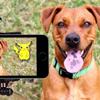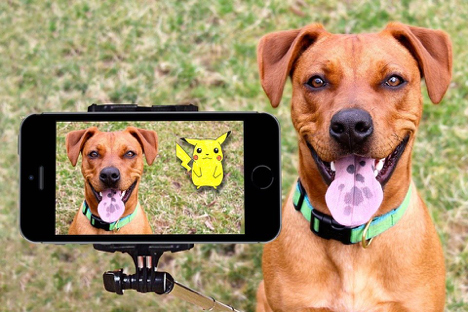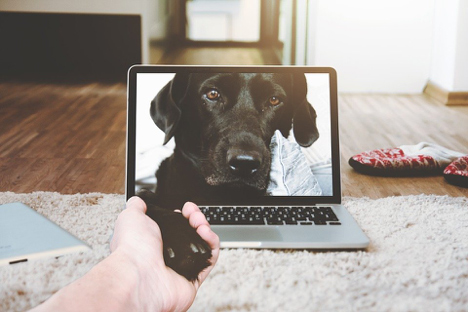
Security Cameras and Safety


There is no doubt that dogs become part of a family. They keep their owners busy and active, reduce stress, provide a sense of purpose, promote happiness, and even have the ability to improve owners’ social lives. Dogs are, of course, a huge responsibility and therefore all owners need to cater to their needs and well-being, which includes keeping them safe.
It’s fun (and even cute) to watch dogs play and run around, but it is important to pay attention to what the dogs like to get into, especially when they are young and very curious about everything. Of course, obvious mistakes like leaving certain human food out on the table where a dog can access it can be dangerous to him or her, but there are many other unobvious things our furry friends might be interested in, such as pesticides, houseplants, and nails.
Ultimately, it is important to pet-proof your home, including the outdoors, to protect your dog and avoid any emergency veterinarian runs. Below are some key ways you can ensure your dog is safe.

Security Cameras
First and foremost, getting a camera to “spy” on dogs during the day can be very useful. Many people invest in security cameras to protect against intruders, but most have not considered getting cameras to watch their dogs and communicate with them, too. These days, we are all busy whether it is with work, school, kids, hobbies, volunteering, or just spending time with other people, so we are unable to be at home with our dogs all of the time. Being able to monitor your dog and make sure he or she is okay can provide peace of mind and let you know your dog is just fine.
There are many pet security cameras on the market today, but the best ones feature two-way audio so that you can speak to your dog and also hear if he or she is barking or growling at something. If you hear barking or growling and that is out of the norm for your dog, there may be an issue. Dogs certainly have less anxiety and feel better by hearing their owners’ voices, so talking to Fido on the two-way camera is a win-win for both you and your dog.
Most cameras also feature notification capabilities so you can be alerted on your phone if the camera detects activity. Depending on the brand, the camera may even take short audio and/or video clips of the activity so you can see what triggered the alert. Storage options for these cameras usually include cloud storage and/or a micro SD memory card so you can go back and review activity.
Of course, perhaps the best part of a pet security camera is that you can immediately call for help if you are away and your dog is in any sort of danger.
Many companies manufacture cameras that allow you to see and hear your dog while you are gone. Some can dispense treats for your dog, even when you are far away.
Trusting Your Dog with Other People
Just like with children, you may need a babysitter sometime. Having a reliable pet sitter is important because it is never easy to trust someone else with your dog. Of course, it is critical to look at online reviews of boarding places and many services such as Rover allow previous users to leave reviews for individual pet sitters. Do your research before leaving your dog to ease your mind before you go. Also, for short term needs, make sure you have at least one neighbor you can trust your dog with should you need some help for any reason.
General House Safety Guidance
Of course, dogs get hot and cold like we do as humans, so keeping a comfortable temperature in your house while you are gone is a smart move. Dogs can overheat in the blazing hot summer and they can also get too cold in freezing winters. Installing and maintaining a thermostat can ensure your dog is in a comfortable environment, even if he or she just sleeps while you are out.
Along the same lines, it is also important to install smoke alarms and carbon monoxide detectors in your home.
As mentioned earlier, dogs like to get into things, especially when we’re not looking. Make sure to keep all chemicals, human food and medications, glass products, and anything dangerous in a cabinet or somehow locked up. Being in the house alone all day can cause a dog to get very bored and start wandering around, so make sure you prevent yours from having access to anything that may be harmful.
When you leave, also make sure your pet has enough water. Even if the temperature in your house is good, a dog can overheat when he or she is thirsty. If your dog is not on a feeding schedule, be sure to leave enough food too in case your dog gets hungry while you are gone.
If your dog is allowed to go in and out of the house while you are gone via a doggy door, you should also get sensors that can alert you if something other than your dog is going out or coming in the house. These usually alert you if the full door - not just the doggy door - is opened, which may mean an intruder has gotten into the house. Other products such as the PetSafe Electronic Door has a “smart detect” feature that will automatically detect your dog’s “smart key” and open and shut when he or she is near. This prevents anything other than your dog from getting through the doggy door.
Speaking of “smart” technology, you can also get a doggy GPS tracker that can simply attach to your dog’s collar so you can remotely see where he or she is located at any given time.
Laundry Rooms and Bathrooms
As mentioned above, it is necessary to put chemicals out of reach of dogs, and this includes in the laundry rooms and bathrooms. Many people store chemicals such as drain openers, bleach, cleaners, and detergents in these locations, so making sure they are up high or in a locked cabinet will protect your pet. Many people have a medicine cabinet in their bathrooms, so make sure your pet cannot get to the medications in yours. Keep the cabinet door closed and, if possible, locked.
We’ve all seen pictures and videos of dogs drinking toilet water, but this can be dangerous due to drowning concerns as well as poisoning concerns. Some toilet cleaners can be lethal to pets, so ensuring your dog doesn’t have access to them is crucial. Also, despite how wild it sounds, many adventurous dogs may try to jump into washers and dryers, which could be disastrous if the lids closed behind them or the machines were started.
Living Areas
Living rooms are a great place to hang out and play with your dog, but they can also pose a lot of possible safety hazards to your dog. Have a heavy lamp on an unsteady side table? That could easily cause an issue if the lamp falls on your dog. Other large furniture can tip over and hurt your dog if he or she runs into it.
People love to light candles and use the fireplace, but these can obviously be a threat to your dog if a fire breaks out. Dogs, especially puppies, oftentimes like to chew on things, so many items in the living room should be placed out of reach of the dog. We all have a lot of electronics around our houses these days, so there are plenty of battery-powered items, cords, and cables your dog might want to get a hold of. Move these items when you are not in the room so that your dog isn’t tempted to chew on them.
Also, ensure whatever types of houseplants you place in your living room are safe and not toxic to pets. Many pet owners are unaware that the types of greenery throughout their houses could be dangerous for their pets.
Kitchens
Obviously, when you think of a kitchen, you think of delicious food and snacks, but these can be harmful to your dog. Grapes, raisins, and chocolate are widely known hazards to a dog, but many other foods and additives such as artificial sugars, nuts, and some citrusy foods can be dangerous too. Dish soaps and bleaches are also found in kitchens, so be sure your dog does not have access to these.
A good first step to pet-proofing your kitchen is to get a garbage can with a lid that your dog cannot open. This will prevent your dog from getting into leftover foods and trash that could be harmful. Don’t leave food out in the open, as many dogs are curious and will try to jump on the table or countertops to get to it. Also, make sure you put breakable items away once you are done so your dog does not knock them over and get things like glass all over the floor.
Bedrooms
Many pet owners love to let their dogs sleep in their beds with them, but bedrooms can also pose danger hazards to dogs. Many people keep jewelry in their bedrooms and curious dogs may want to eat it, so it is important to keep jewelry in a box or some sort of closed container. Just like with the living room, most of us have a lot of electronics and cords in our bedrooms that should be removed if your dog is unattended in the bedroom. Of course, make sure the windows are secured and your dog cannot jump out.
Basements/Garages
Basements and garages are two of the least used rooms around the house, but they can be a huge risk to a dog. Most strong, lethal chemicals are kept in one or both of these rooms including paints, motor oil, battery acid, and more. If any of these chemicals are spilled, make sure to keep your dog out of the area while you clean them. Tools and items such as screws and nails are usually stored in these rooms and can be very dangerous to a dog if they are stepped on or swallowed. Make sure these things are not loose and are stashed away where your dog cannot get to them.
Outside
Ah, the great outdoors - most dogs’ favorite place to play and run free. Yards, however, are oftentimes the most dangerous place for a dog as there are many naturally occurring factors outside that can harm him or her. Firstly, naturally occurring plants and weeds can be toxic to dogs and cause illness, so make sure you know what is growing in your yard before letting your dog roam free. Common things that are dangerous include daffodils, azaleas, mulches, and herbicides. Do some research before planting or growing anything in your yard.
Ensure your yard has a sturdy, reliable gate that your dog cannot get out of (and other animals cannot get into). Some dogs can jump higher than you might expect, especially if they are excited or chasing something, so make sure your fence is stable and high enough. Of course, electric fences will keep your dog within a certain range of your house. If leaving your dog unattended outside, make sure access to fire pits and pools is blocked off.
Of course, flea and tick prevention is also a “must” if you let your dog explore the outdoors. Talk to your dog’s vet about the best option to keep your dog healthy and happy.
Conclusion
Overall, making sure your dog is secure is vital and doesn’t have to be an extremely hard task. Removing items you don’t want your dog getting into or eating is a good first step, but taking other measures such as installing “smart home” technology including security cameras and GPS trackers is an extremely beneficial choice.
